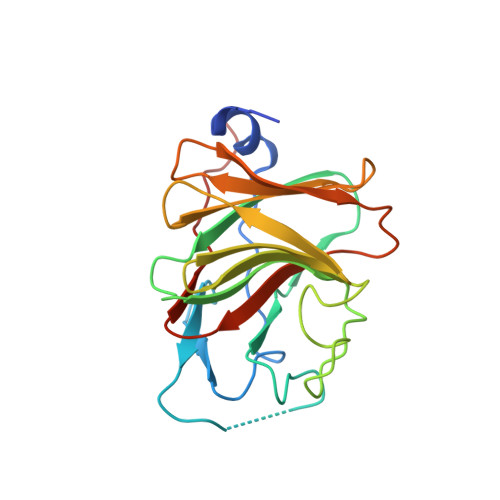The TRIM14 PRYSPRY domain mediates protein interaction via its basic interface.
Yu, Y., Liang, L., Jin, Y., Yin, Y.(2019) FEBS Lett 593: 1122-1129
- PubMed: 30973643
- DOI: https://doi.org/10.1002/1873-3468.13386
- Primary Citation of Related Structures:
6JBM - PubMed Abstract:
Tripartite motif (TRIM)14 was recently shown to be an important molecule against pathogens. Its PRYSPRY domain acts as a protein-protein interaction module. TRIM14 exerts distinct functions via its PRYSPRY domain by interacting with different partners. However, the structural basis for its binding specificity remains unknown. Here we solved the crystal structure of the TRIM14 PRYSPRY domain, and found a positively charged surface that may mediate its partner specificity. Isothermal titration calorimetry reveals that the TRIM14 PRYSPRY domain binds to acidic peptides, and the analysis of the reported partners of TRIM14 is consistent with our assumption. Therefore, we demonstrate that the PRYSPRY domain of TRIM14 harbors a putative basic interface that may favorably bind to acidic amino acid residues.
Organizational Affiliation:
Institute of Systems Biomedicine, Department of Pathology, School of Basic Medical Sciences, Peking University Health Science Center, Beijing, China.















